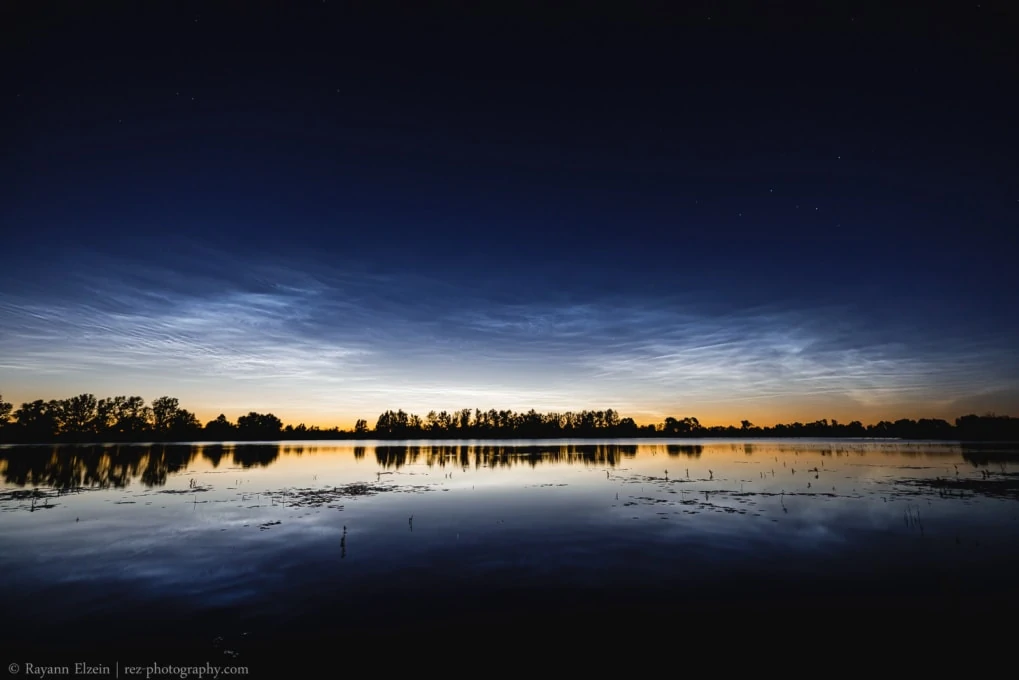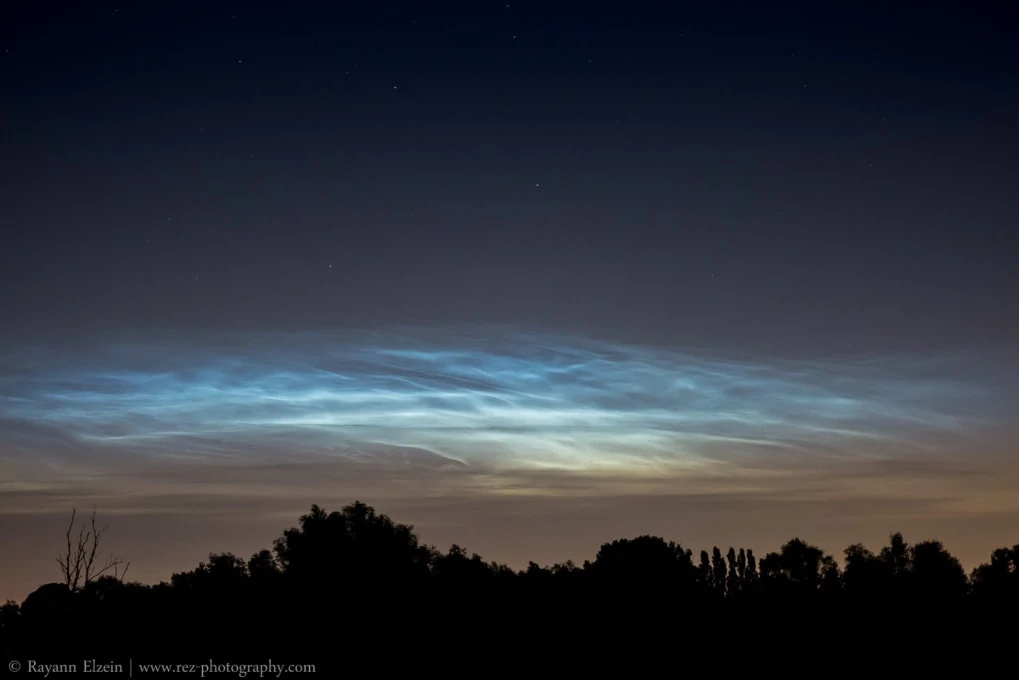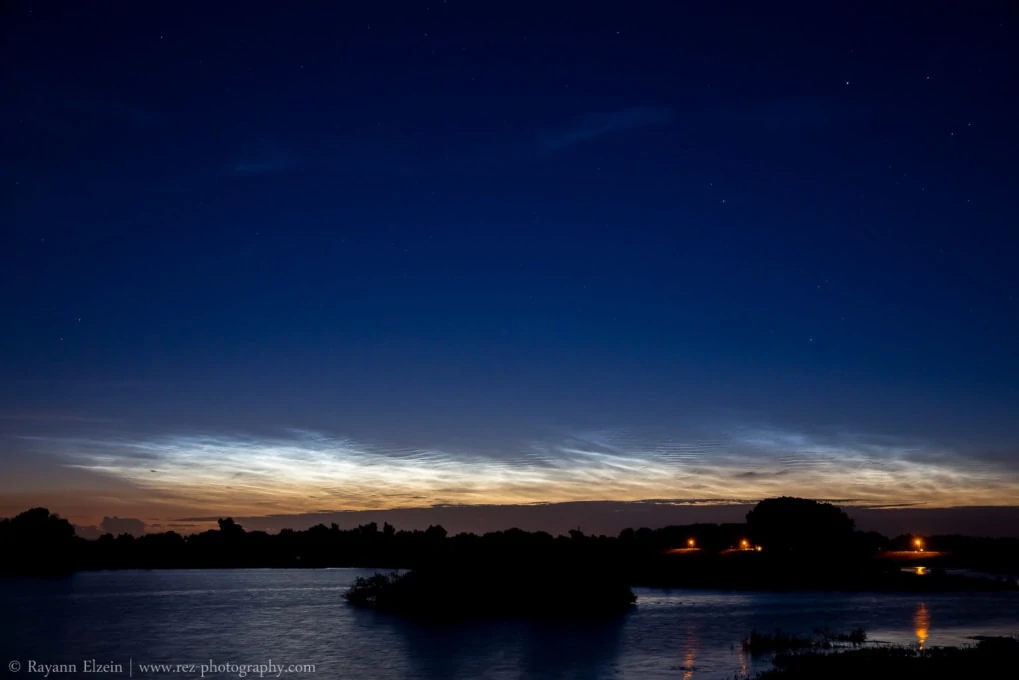Last updated: 12 June 2019
Summer sky is too bright in northern latitudes to be able to see and photograph the northern lights. Luckily, the noctilucent clouds (also known as NLC) take over the northen sky for some beautiful show and surprising shapes. Before I tell you how to photograph noctilucent clouds, let me first explain briefly what they are.
Update June 2019: the season has already started and I saw my first noctilucent clouds here in the Netherlands on 8 June! Then on 12 June, an extraordinary display took place. These were the brightest and largest NLC that I have ever seen.

What are noctilucent clouds
Noctilucent clouds, or night-shining clouds, are the highest clouds in our atmosphere. They are formed at an altitude of about 80 km (50 mi). Their origin is not yet fully understood by scientists. What is known for sure is that they consist of water vapour and dust particles in the mesosphere. The mesosphere is a layer of our atmosphere located at an altitude between about 50 km and 100 km (31 mi and 62 mi). NLC also require a very cold temperature (-120°C / -184°F) to appear.
They were first observed and reported by scientists at the end of the 19th century. By then, they were thought to originate from the eruption of the Krakatoa that released enormous quantities of ashes into the atmosphere. However, when the ashes settled, the noctilucent clouds continued to appear. It has since then been proven that a volcanic eruption can contribute to the formation of these clouds, but is not their sole origin. Several satellites have been launched with the mission to study them, so hopefully we will learn more about them in the coming years.

When and where are they visible
The best period to see noctilucent clouds is a few weeks before and after the summer solstice. This is when the mesosphere is the coldest, enabling their formation. The best latitudes to observe them are comprised between 50°N and 65°N. They have only rarely been observed further south. They are moreover invisible further north because the sun never sets in summer above the arctic circle, making them invisible. Current literature and sources on the internet mention that they appear in the northern sky when the sun is between 6° and 16° under the horizon. My personal observations are more in the range of 10° and 14°. You can use the excellent website or app The Photographer Ephemeris to find the times when the sun reaches these positions at your location.

Be careful not to confuse NLC with other clouds. If you have doubts, take a picture. These other clouds will always appear dark on a photo.
How to photograph noctilucent clouds
To be honest, photographing noctilucent clouds is not much different from photographing the northern lights. You need a tripod and a camera with the ability to operate it in manual mode. The main difference is that they often don’t quite fill the sky as much as the Aurora, and therefore you may need a longer lens to capture them. I have personally used focal lengths between 24 mm and 200 mm. Because they occur at night, you will need to use higher ISO. The ISO on my photos ranges between 800 ISO (just after sunset or before sunrise) to 1600 ISO in the darkest part of the night.
In more northern latitudes than mine (52°N), NLC can fill the sky a lot more, sometimes all the way to the zenith. Then you can safely use a wide angle lens.
To help you understanding what times are best to photograph them, I have added the sun’s position under the horizon in the caption of all the pictures in this article.
I particularly enjoy photographing them with a very long focal length. This allows to show all the fine details of the clouds like ripples and waves. I took the photo below at 200 mm.

The same scene with a wide angle lens looked as follows (photo taken at approximately the same time on the same day).

Sometimes the details are not as clear as on the couple of pictures above. These NLC were a little bit “messy” but I loved the transition between the orange glow of the sun, and the deep blue tint of the night sky.

Wrapping up
The clouds are visible between late May and the middle of August depending on your latitude. In the Netherlands, I have only been able to observe them between 25 June and 15 July. The window is therefore very short so you need to be prepared when the time comes.
During the current summer 2018 season, I have been able to observe them, still from the Netherlands, as early as the first week of June. On 18 June, there has been a really bright display.

If you have questions on how to photograph noctilucent clouds, please ask them in the comments below and I will be happy to help you. And if you want to be the first to receive my latest news and tutorials, please register to my newsletter!


Well explained! Thank you!
A really helpful guide, thank you. Taking my DLSR out while on night out on The Solent (s. England) with my fishing friends tonight and really hoping there’s a display to try and photograph!
I am glad that you found the tutorial helpful! Good luck tonight! I’m trying too, finally we have clear weather again after nearly a week of clouds. Let me know how it goes!